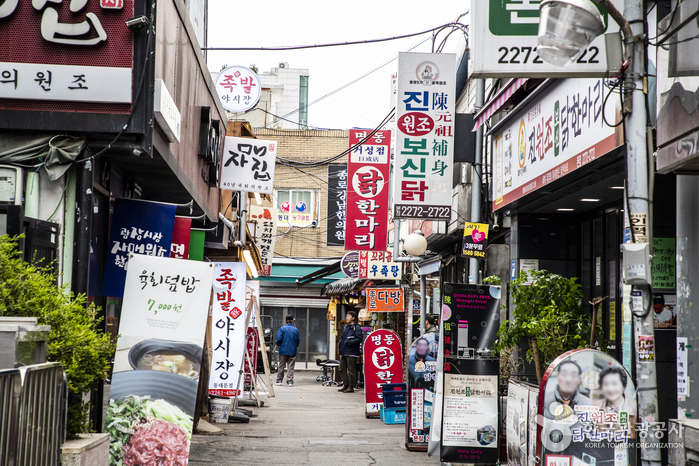Descente - NC Bulgwang Branch [Tax Refund Shop] (데상트 NC불광점)
8.9Km 2024-04-19
20, Bulgwang-ro, Eunpyeong-gu, Seoul
-
Castelbajac - NC Bulgwang Branch [Tax Refund Shop] (카스텔바작 NC불광)
8.9Km 2024-04-19
20, Bulgwang-ro, Eunpyeong-gu, Seoul
-
The North Face - NC Bulgwang Branch [Tax Refund Shop] (노스페이스 NC불광점)
8.9Km 2024-04-19
20, Bulgwang-ro, Eunpyeong-gu, Seoul
-
Eider - NC Bulgwang Branch [Tax Refund Shop] (아이더 NC불광점)
8.9Km 2024-04-19
20, Bulgwang-ro, Eunpyeong-gu, Seoul
-
Isa Knox - NC Bulgwang Branch [Tax Refund Shop] (이자녹스 NC불광점)
8.9Km 2024-04-19
20, Bulgwang-ro, Eunpyeong-gu, Seoul
-
Discovery - NC Bulgwang Branch [Tax Refund Shop] (디스커버리 NC불광점)
8.9Km 2024-04-22
20, Bulgwang-ro, Eunpyeong-gu, Seoul
-
ER NC Department Store - Bulgwang Branch [Tax Refund Shop] (ER NC백화점 불광)
8.9Km 2024-04-22
8F, 20, Bulgwang-ro, Eunpyeong-gu, Seoul
-
Roem - NC Bulgwang Branch [Tax Refund Shop] (로엠 NC불광)
8.9Km 2024-07-01
20, Bulgwang-ro, Eunpyeong-gu, Seoul
-
Dongdaemun Dak Hanmari Alley (서울 동대문 닭한마리 골목)
8.9Km 2024-03-04
37-7, Jongno 5(o)-ga, Jongno-gu, Seoul
+82-2-2236-9135
Located near the Dongdaemun Market, Dongdaemun Dak Hanmari Alley gets its name from the restaurants serving dak hanmari (whole chicken soup) that line the alley. Dak hanmari (whole chicken soup), literally “one whole chicken” in Korean, is a dish where a whole chicken is boiled in a soup and served with the alley’s special sauce. After the diners eat the meat, the broth is used to make kalguksu (noodle soup). Because the area is home to large-scale apparel and fashion material markets of the Dongdaemun Market, the district is always lively and bustling.
Olens - Dongdaemun Branch [Tax Refund Shop] (오렌즈 동대문)
8.9Km 2024-04-16
1F, 251, Jangchungdan-ro, Jung-gu, Seoul
-
![Descente - NC Bulgwang Branch [Tax Refund Shop] (데상트 NC불광점)](http://tong.visitkorea.or.kr/cms/resource/56/2878256_image2_1.jpg)
![Castelbajac - NC Bulgwang Branch [Tax Refund Shop] (카스텔바작 NC불광)](http://tong.visitkorea.or.kr/cms/resource/59/2878259_image2_1.jpg)
![The North Face - NC Bulgwang Branch [Tax Refund Shop] (노스페이스 NC불광점)](http://tong.visitkorea.or.kr/cms/resource/62/2878262_image2_1.jpg)
![Eider - NC Bulgwang Branch [Tax Refund Shop] (아이더 NC불광점)](http://tong.visitkorea.or.kr/cms/resource/64/2878264_image2_1.jpg)
![Isa Knox - NC Bulgwang Branch [Tax Refund Shop] (이자녹스 NC불광점)](http://tong.visitkorea.or.kr/cms/resource/67/2878267_image2_1.jpg)
![Discovery - NC Bulgwang Branch [Tax Refund Shop] (디스커버리 NC불광점)](http://tong.visitkorea.or.kr/cms/resource/76/2878276_image2_1.jpg)
![ER NC Department Store - Bulgwang Branch [Tax Refund Shop] (ER NC백화점 불광)](http://tong.visitkorea.or.kr/cms/resource/21/2888421_image2_1.jpg)
![Roem - NC Bulgwang Branch [Tax Refund Shop] (로엠 NC불광)](http://tong.visitkorea.or.kr/cms/resource/19/3314719_image2_1.jpg)

![Olens - Dongdaemun Branch [Tax Refund Shop] (오렌즈 동대문)](http://tong.visitkorea.or.kr/cms/resource/81/2887981_image2_1.jpg)
 English
English
 한국어
한국어 日本語
日本語 中文(简体)
中文(简体) Deutsch
Deutsch Français
Français Español
Español Русский
Русский